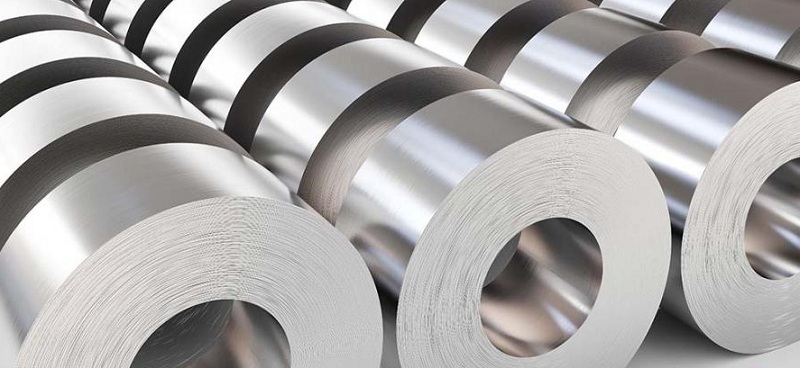
eletrical steel is a silicon content of 0.5%~4.5% carbon silicon ferroalloy material, with high magnetic permeability, low coercivity, large resistivity and other excellent properties. According to the grain arrangement and the degree of crystal orientation aggregation in eletrical steel, it can be divided into non-oriented eletrical steel and oriented eletrical steel. The grain orientation of oriented eletrical steel is consistent in the rolling direction, and it has excellent magnetic induction intensity in this direction, which is suitable for the field of stationary, such as various types of transformers. The grain orientation inside the non-oriented eletrical steel is different, although the magnetic induction strength in the rolling direction is weaker than that of the oriented eletrical steel, but it has a good magnetic induction strength in all directions, which is suitable for the rotary field, such as industrial motors, new energy vehicle drive motors, and all kinds of electrical appliances.
According to the magnitude of magnetic induction, oriented eletrical steel can be further divided into high magnetic induction oriented eletrical steel (Hi-B) and general oriented eletrical steel (CGO). The oriented eletrical steel with magnetic inductance of less than 1.88T is called general oriented eletrical steel (CGO), and the oriented eletrical steel with magnetic inductance greater than or equal to 1.88T is called high magnetic inductance oriented eletrical steel (Hi-B). Generally, the high magnetic inductance oriented eletrical steel has lower iron loss performance, and can reduce the loss during the energy conversion process when used as the transformer iron core. For non-oriented eletrical steel, it is directly classified according to the iron loss properties of eletrical steel materials. Generally, the iron core loss of P1.5/50 is less than or equal to 4.00W/kg (corresponding to the grade 400 and below) of unoriented eletrical steel is called high grade unoriented eletrical steel, and the rest is low and medium grade unoriented eletrical steel. High grade non-oriented eletrical steel can improve the energy utilization efficiency of electrical equipment.

Comparison of technical barriers, oriented eletrical steel > non-oriented eletrical steel. Oriented eletrical steel has a long process flow, many key control points, the need to accurately control the element content, and the need for extremely high dimensional accuracy on the back end rolling, which is higher than the technical barriers of non-oriented eletrical steel. Without any treatment, the internal grain distribution of eletrical steel is disorganized, and oriented eletrical steel needs to add inhibitors (such as MnS, AlN) from the iron-making step, accurately control the element composition, and control the content of oxides and inclusions in hot metal at a low level. In the rolling process, it is also necessary to undergo several high-temperature annealing treatments to minimize the Angle between the grain direction and the rolling direction. Under the high technical barriers, only a few players have the production capacity of oriented eletrical steel, and the supply pattern is relatively excellent.
The rise of new energy and energy efficiency upgrades has brought structural prosperity to high-grade eletrical steel materials. Since the second half of 2021, in the oriented and unoriented eletrical steel market, the price gap between high-end products and mid - and low-end products has continued to widen, which has evolved into four segments: high magnetic induction oriented eletrical steel (Hi-B), general oriented eletrical steel (CGO), high grade unoriented eletrical steel, and medium and low grade unoriented eletrical steel. A change in price is essentially a marginal change in supply and demand.
How About Stainless Steel Linear Drainage Ditch Customization?
2022-09-01Common 304 stainless steel sheet types
2020-12-24The Application and Classification of Silicon Steel Sheets in Transformer Cores
2024-11-26Made of stainless steel, shining 2022 Winter Olympics!
2022-02-23The application of 304 stainless steel plate in construction
2024-07-16Stainless steel surface treatment process, do you like it?
2022-10-15






